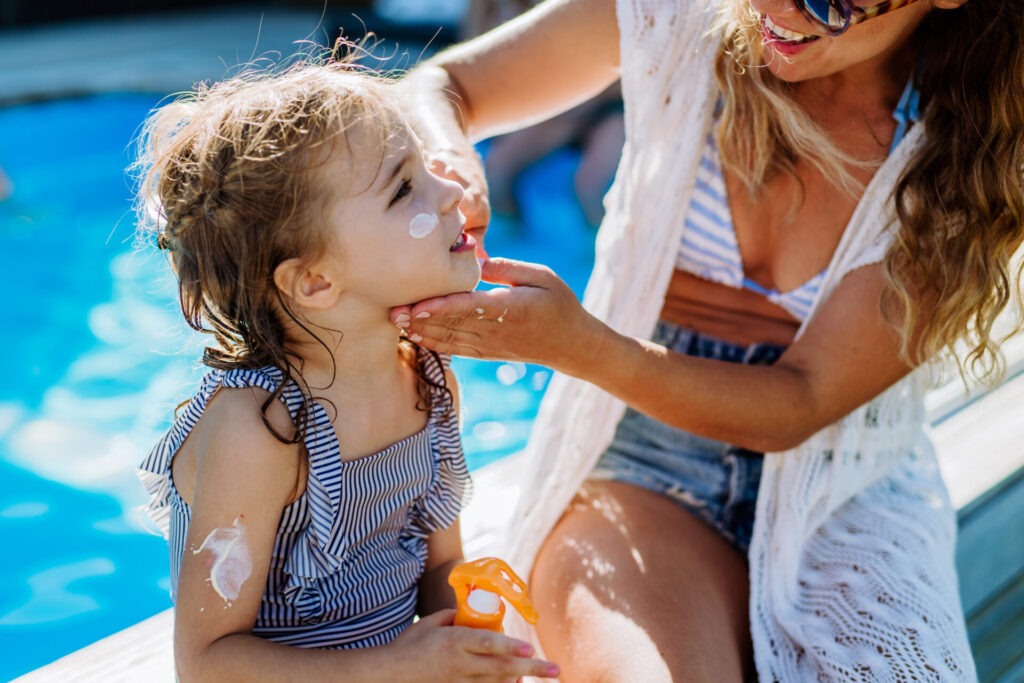 You can’t rely on young children to alert you to vision problems, so play offense, rather than defense. The Canadian Pediatric Society says eye anatomy and function should be
You can’t rely on young children to alert you to vision problems, so play offense, rather than defense. The Canadian Pediatric Society says eye anatomy and function should be
checked at regular and well-child visits with the family doctor. Visual acuity should be assessed if your preschooler complains about not being able to see well or you notice signs of vision problems (see below).
Optometrists encourage annual visits from age three. “A young child may not be able to articulate that they are seeing double or not seeing properly out of one eye,” says Dr. Alyssa Markowitz, optometrist and owner of Liberty Village Eye Care in Toronto. (Children under 19 are covered for routine eye exams from an optometrist by provincial health care plans.)
When children begin to learn to read, visual problems can become apparent, and it is even more important to see an optometrist. “By the time your children are seven or eight, they are not just learning to read, but are reading to learn. This is a critical stage in educational success,” says Dr. Markowitz.
If you notice your child is having difficulty with gross or fine motor skills, a good place to start would be a comprehensive visual assessment with an optometrist. Ask your family doctor for a referral if you’re having trouble finding one. Be sure that your child’s basic visual system is working and that your child has clear single vision up close and far away. If the visual assessment is considered normal, then you may want to consider more testing to rule out other concerns.
Signs of vision problems
Aside from difficulty reading or poor performance in school, there are other signs of poor vision to look for, including:
- Inability to focus
- Sitting really close to the TV or bumping into things
- Eye turn while gazing in certain directions
- If your child likes to keep his or her head tilted in a certain position that deviates from straight
Some or all of the above can be signs of amblyopia (or vision loss), which can be caused by strabismus (lazy eye) or a refractive error (inability for the eye to focus on an image). Refractive errors are usually corrected with glasses.
If your child does require glasses, he or she will need to visit the optometrist regularly. When it comes to vision, some kids are stable for a long time, while others can have changes in their eyes within six months.
Time for glasses
You may have some concerns when it comes to buying your child’s first pair of
glasses. Dr. Markowitz has these tips:
-
- Ask your eye doctor to prescribe glasses using Trivex, a more impact-resistant material for the lenses, which also gives the best possible
optics. Trivex is slightly more expensive, but $150 to $200 is not unreasonable for good quality frames and lenses. Consider purchasing two pairs in case of loss or damage.
- Ask your eye doctor to prescribe glasses using Trivex, a more impact-resistant material for the lenses, which also gives the best possible
-
- If your child plays sports, Trivex lenses are a good option, but you may also want to invest in protective goggles that can be worn over the glasses.
-
- Make sure the fit of the frame is good; kids should not be wearing their glasses at the tip of their nose. Your child needs to look through
the lenses, not over them.
- Make sure the fit of the frame is good; kids should not be wearing their glasses at the tip of their nose. Your child needs to look through
-
- Teach your child how to handle the glasses properly to minimize loss or breakage.
-
- Contact lenses are an option for older children. Dr. Markowitz has fitted kids as young as eight with lenses. Daily contacts are the best
for kids since there’s no cleaning involved – just a fresh pair every day. Children with high prescriptions, or children with prescriptions with a large difference between both eyes, are good candidates.
- Contact lenses are an option for older children. Dr. Markowitz has fitted kids as young as eight with lenses. Daily contacts are the best
- In terms of style, personal preference is key. Kids have to love them and feel
confident. If they are self conscious they won’t wear them.
Originally published in ParentsCanada magazine, February/March 2013.















